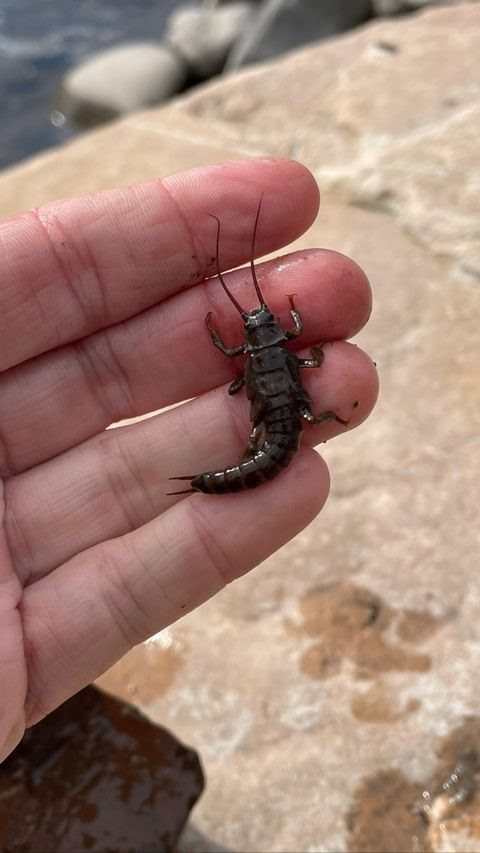Before taking to the air, stoneflies develop on the beds of rivers and streams. In this case, the scenic Blackfoot River. Stonefly nymphs (called naiads) can be readily identified by their two tail-like structures, which differ from a mayfly’s typical three tail filaments. Mayflies also have distinctive plate-like gills on the tops of their abdomens, whereas stoneflies either lack gills or have tufts of gills at the bases of the legs/and or the bases of the undersides of their abdomens. Stonefly naiads require one to three years to mature, with the full-grown naiads crawling out of the water to molt for the last time.
Giant Stoneflies (genus Pteronarcys), also sometimes called salmon flies for the pinkish color of freshly emerged adults, are very large stoneflies (ranging from about an inch to over 2 ¼ inches). The naiads are shredders of decaying leaves, and some will graze films of algae that grow on the stream or river bed.
Patterned Stoneflies (family Perlodidae) are medium to fairly large species with long cerci. The nymphs of patterned stoneflies are predators of other stream invertebrates. 44 or more species occur in the Pacific Northwest, making it difficult to narrow this individual down.
Photos by: Melissa Mathis on 4/13/21 in Greenough, MT

